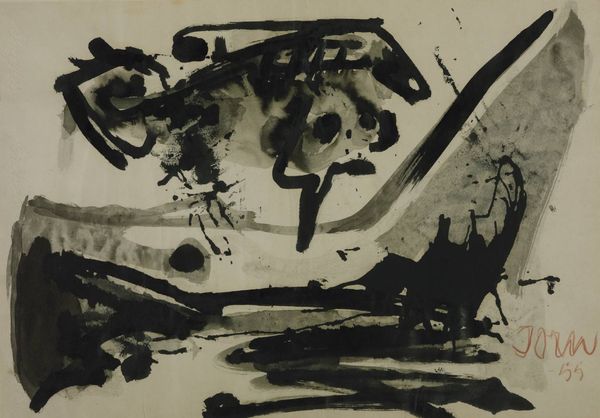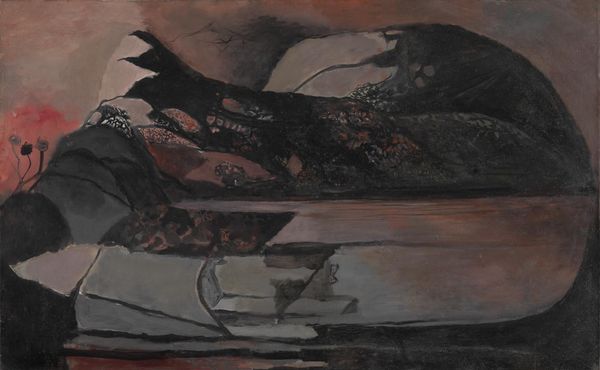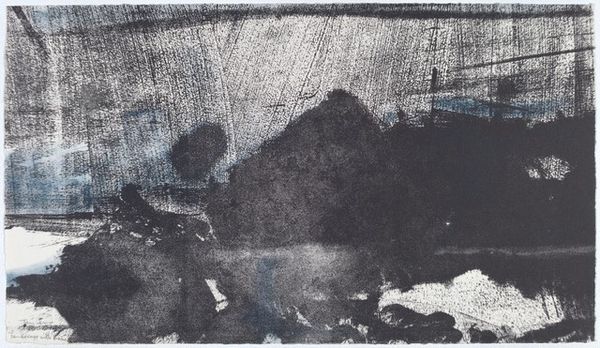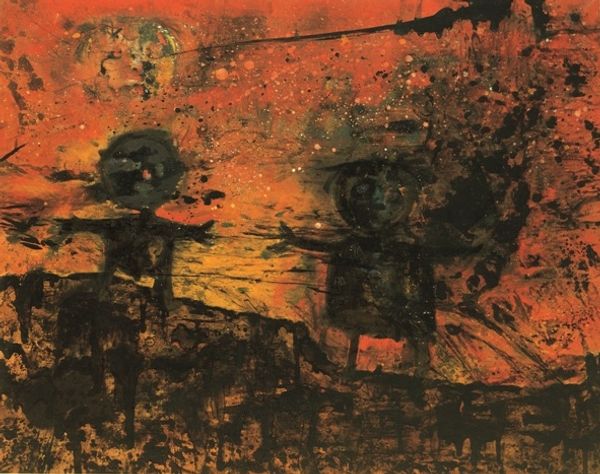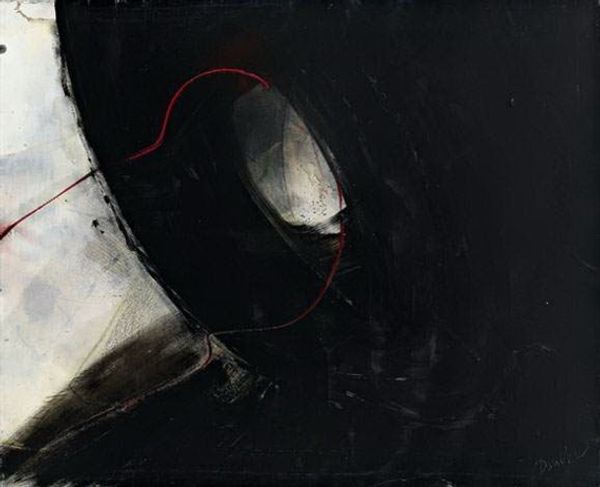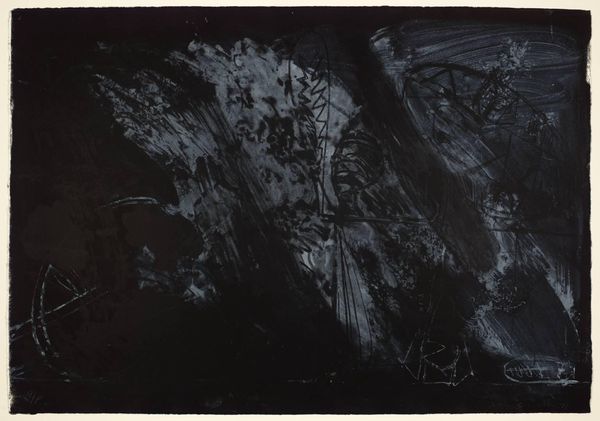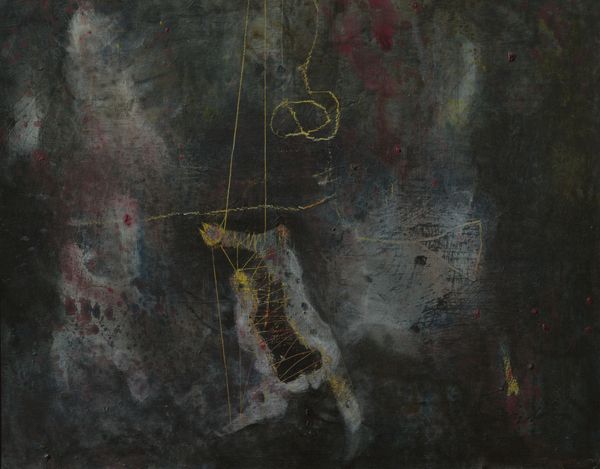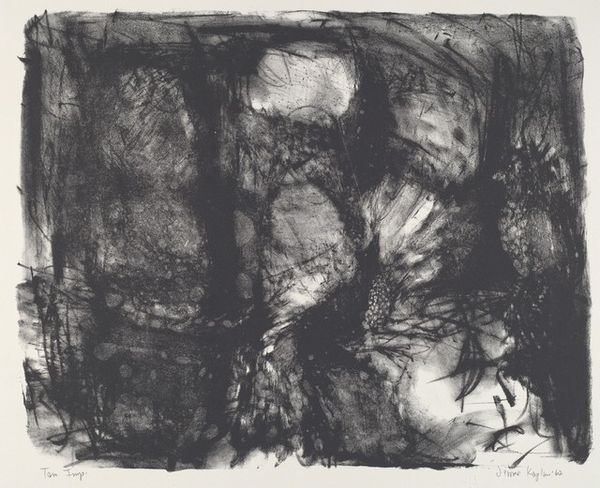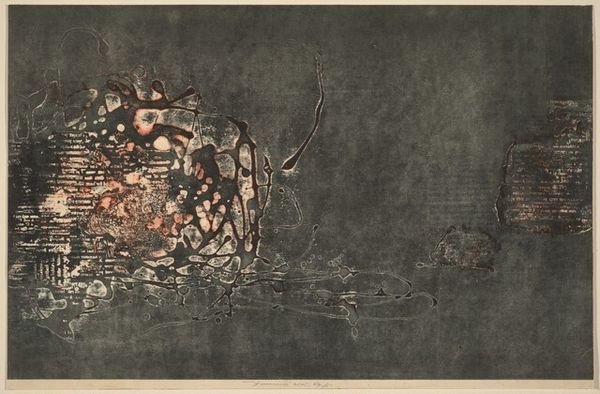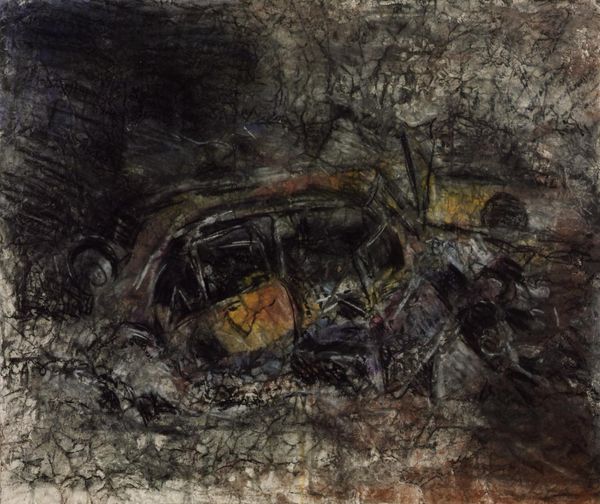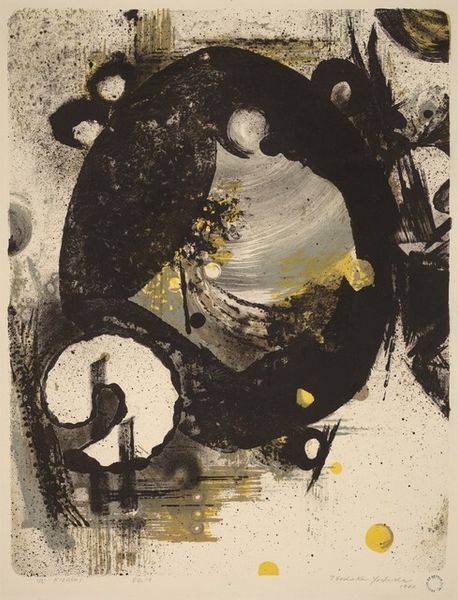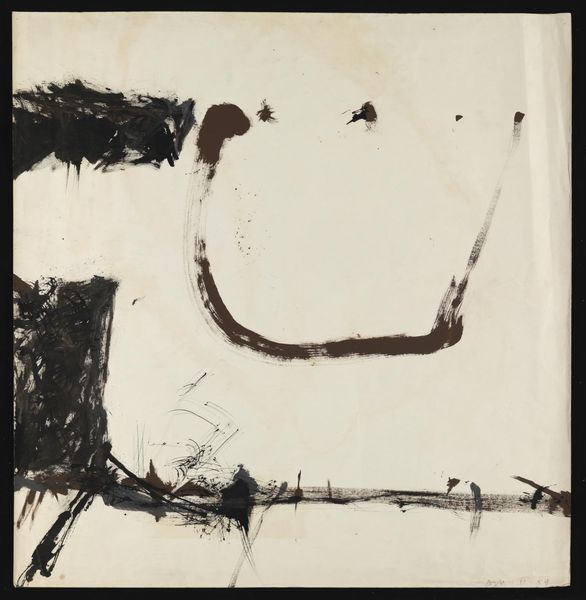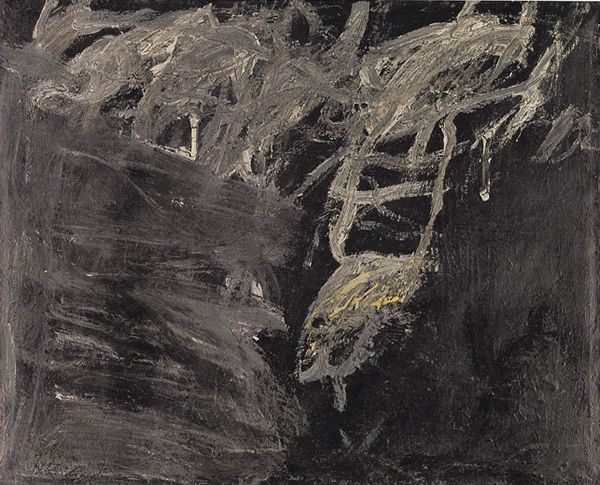
Copyright: Public domain
Victor Hugo, the celebrated French novelist, made this artwork on paper using ink and wash. Snakes can be seen to represent primal energy and untamed passions. As such, this image may be seen as a symbolic representation of the dark side of human nature. The ink creates a stark contrast between light and shadow, which exaggerates the snake’s menacing presence. Hugo made the picture during the height of French Romanticism. The movement valued individual experience, emotion and imagination over reason and intellect. These values were often expressed through images of the sublime power of nature. France’s history of revolution may also have contributed to the taste for art that challenged social norms. To properly understand art like this, it is essential that we consider its social context. Extensive research into the cultural and political history of nineteenth-century France would help us to better understand Hugo’s artistic choices. The meaning of art is contingent on its context, and is always open to reinterpretation.
Comments
No comments
Be the first to comment and join the conversation on the ultimate creative platform.
